Originally published on
thenanyan.com
On Wednesday, October 23, 40 international students from Peking University Shenzhen Graduate School (PKUSZ), participated in a Discover Nanshan Event organized by the Nanshan District Foreign Affairs Office and carried out by the Southwind Social Work Service Center.
At most schools, a Wednesday would just be a typical day. But for PKU students, especially those of the Peking University HSBC Business School (PHBS) who have no classes on Wednesdays, they are a golden opportunity to explore Shenzhen.
We boarded a bus in front of Building H just before 1pm to travel to our first destination, a tall office building in the illustrious Shenzhen Bay Eco-technology Park area of Shenzhen. I saw the Baidu Tower nearby as we arrived. Our first visit was to Royole Corporation’s Shenzhen office. Royole primarily manufactures ultra-thin (0.01mm), flexible displays and sensors that can be used in a wide variety of applications, like automotive accessory controls, handheld devices, and even selfie sticks. They even partnered with Louis Vuitton to create a next-generation luxury handbag with a flexible screen. It was like walking into a toy store of the future, with all the impressive gadgets on open display. Our hosts graciously allowed us free access to all of the devices in sight. We reveled in the fun of playing with the VR headsets, flexible sensors, and flexible screens
—and thankfully nothing broke in the process.
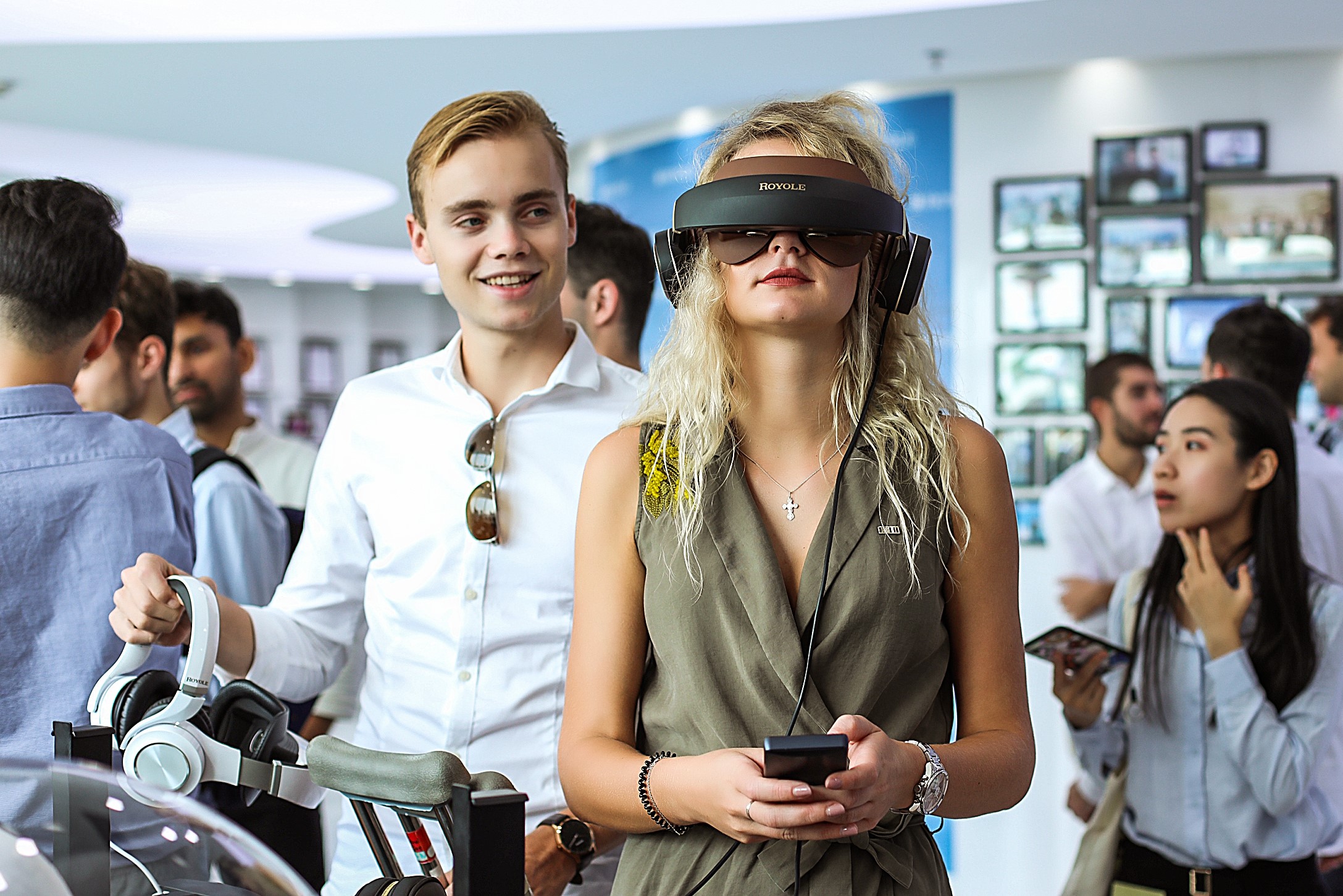
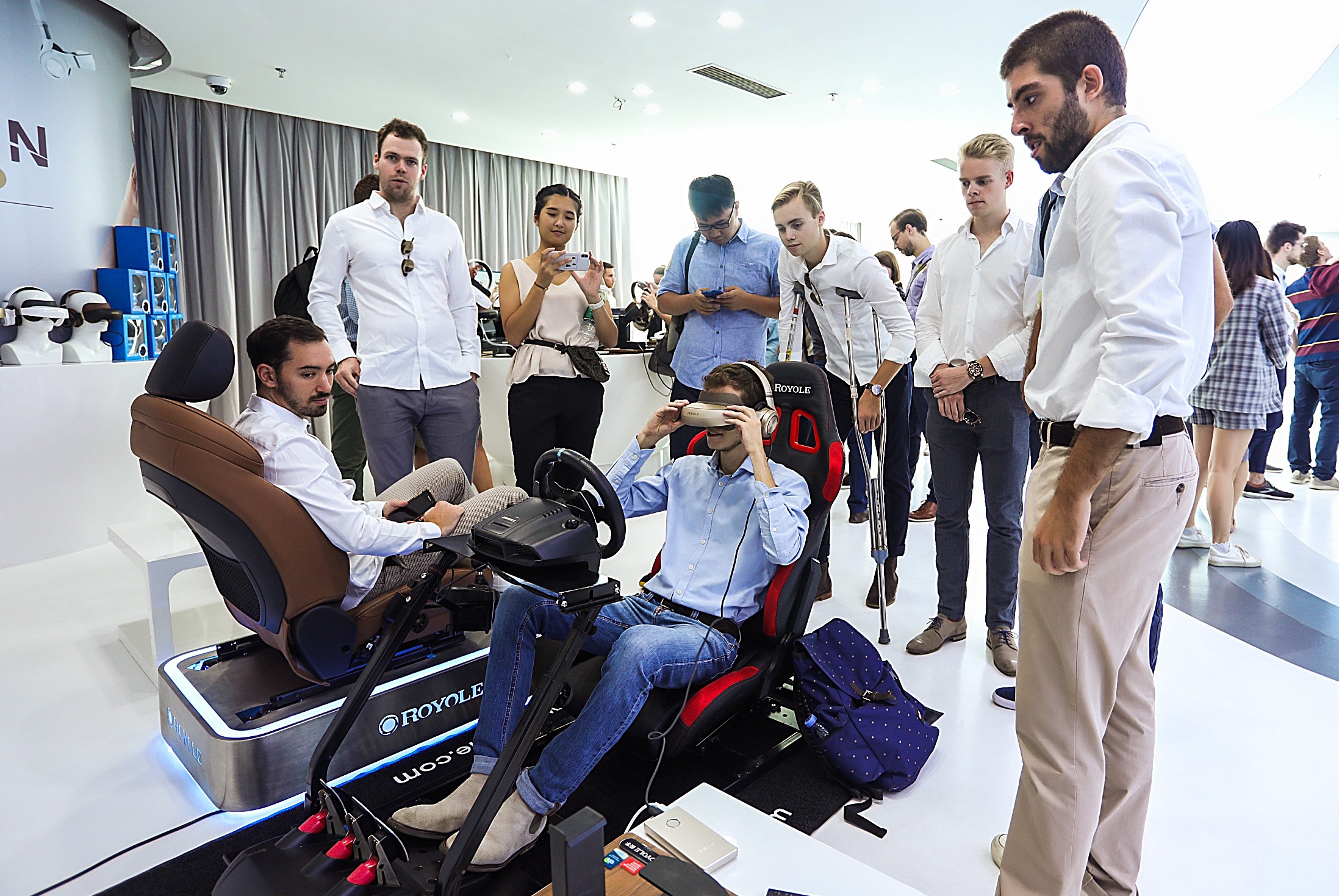
The next company visit was Appotronics Corporation. Just one step into their offices and everyone was immediately impressed by their gigantic, high-definition graphics displays. It was no surprise to discover that their specialty is laser projectors which are capable of amazing clarity. The entire lobby wall was one large screen playing a video of a simulated security program analyzing a virtual city. Our host highlighted this technology’s superiority in security services, proudly mentioning their displays are used throughout China, including Tiananmen Square. Their projectors even lit up parts of the ancient Forbidden City for the Mid-Autumn Festival. The rest of the Appotronics Corporation visit was like a guided high-tech tour of a future home. We stopped in various showrooms, each demonstrating a different technology. I snuck off with a few friends to sit on a couch and stare at underwater immersive ocean scenes projected onto two walls and a ceiling. It felt like you are actually underwater while sitting on a couch. Somebody remarked that it would be cool to set something like this up in a PKU dorm room. The only thing that could tempt us off the couch was the theater in the next room. We were treated to a 3D film to showcase their high-end projectors which are used at over 10,000 movie theatres in China. That marked the end of our private industry visits, and it was on to the culture portion of the tour.
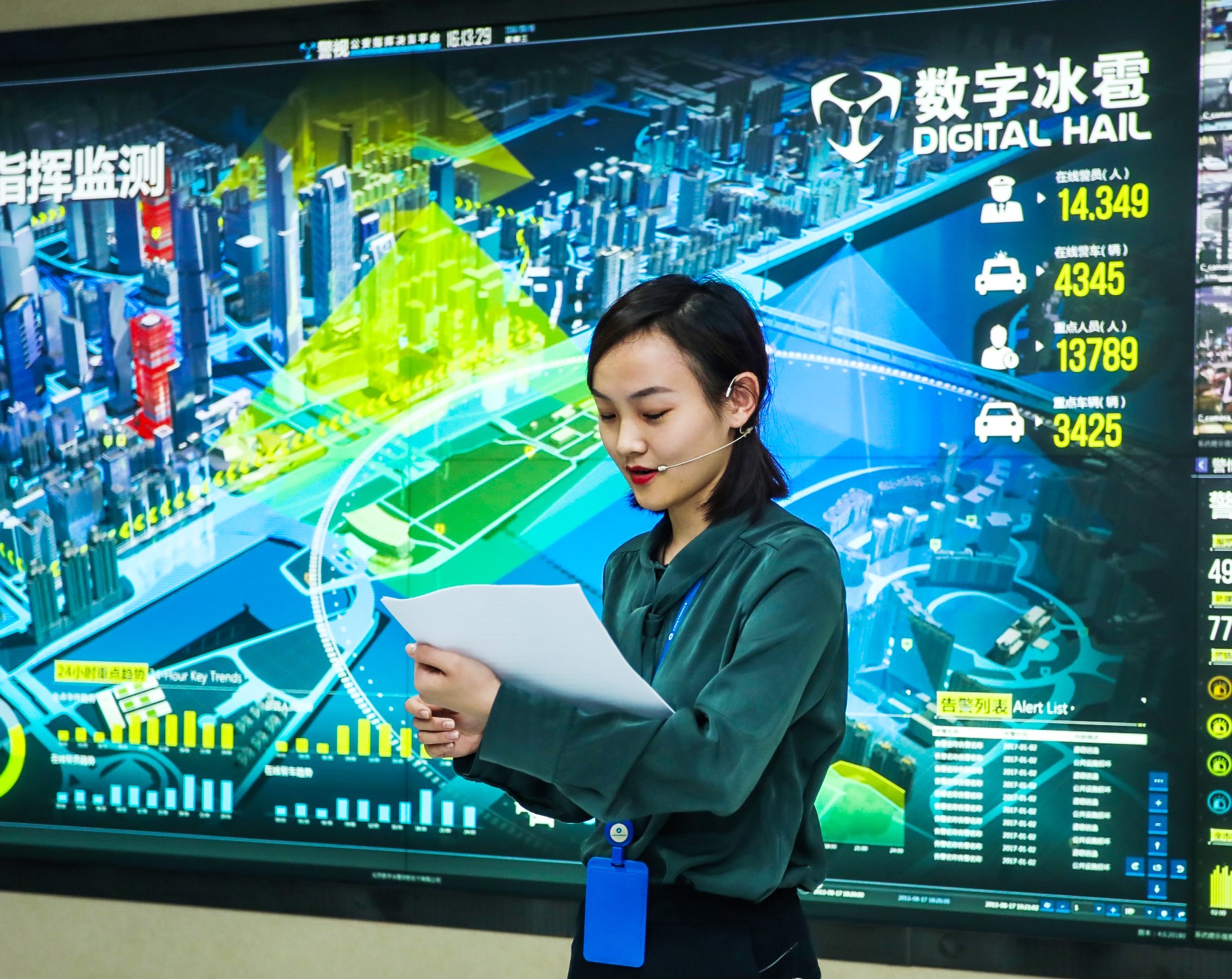
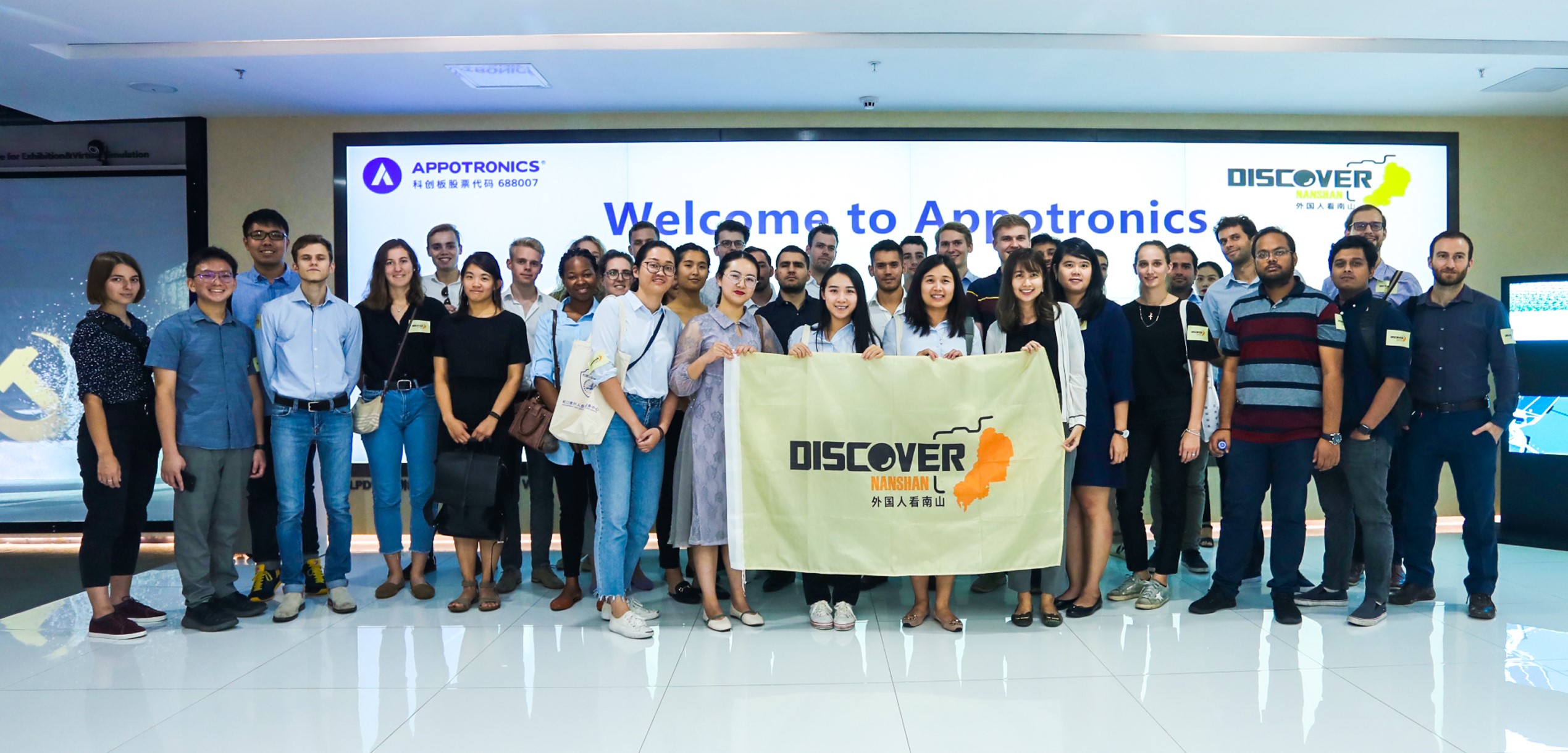
Our first culture stop was the Seaworld Culture and Arts Center, designed like a modern museum and built on the Shenzhen Bay. I enjoyed peering out across the bay towards the Shenzhen Bay Bridge and Hong Kong on the other side. Yuan Geng, founder of many businesses like Ping An Insurance and proclaimed to be the originator of the special economic zone model, apparently enjoyed the view as well. He’s commemorated by a statue facing the bay outside the center in Yuan Geng Square. I expected the building to house a museum but was surprised to find retailers inside. Granted, they were selling highbrow, high-cost design products and pieces of art, but it was an unfamiliar concept for me. Though we learned it is a multi-purpose space for retail, galleries, theatres, and restaurants. They have art and design exhibits, including a regular collaboration with London’s Victoria & Albert Museum. We were able to walk through a free exhibit on the ancient Chinese architecture and engineering technique,
Sun Mao, reinterpreted to create modern designs.
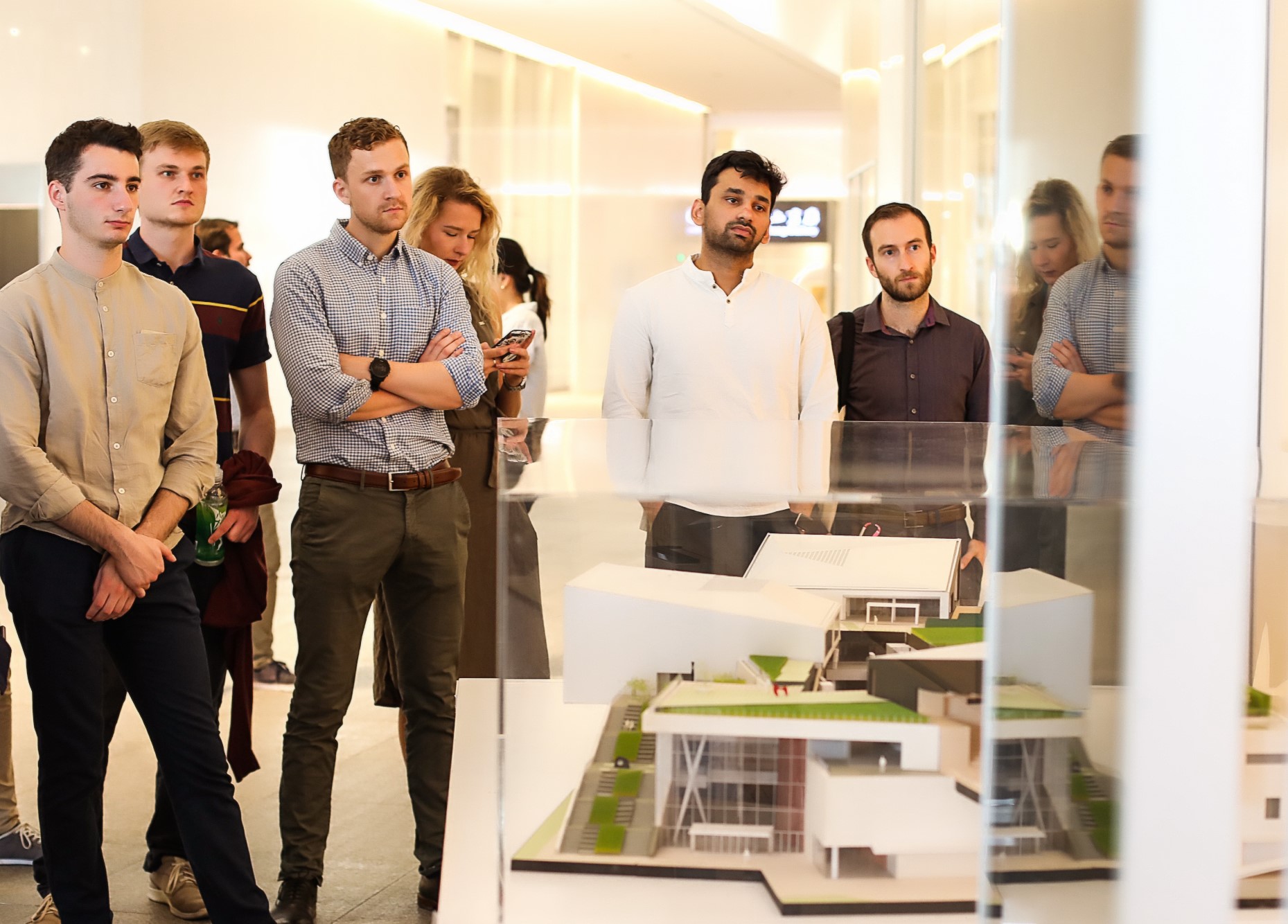
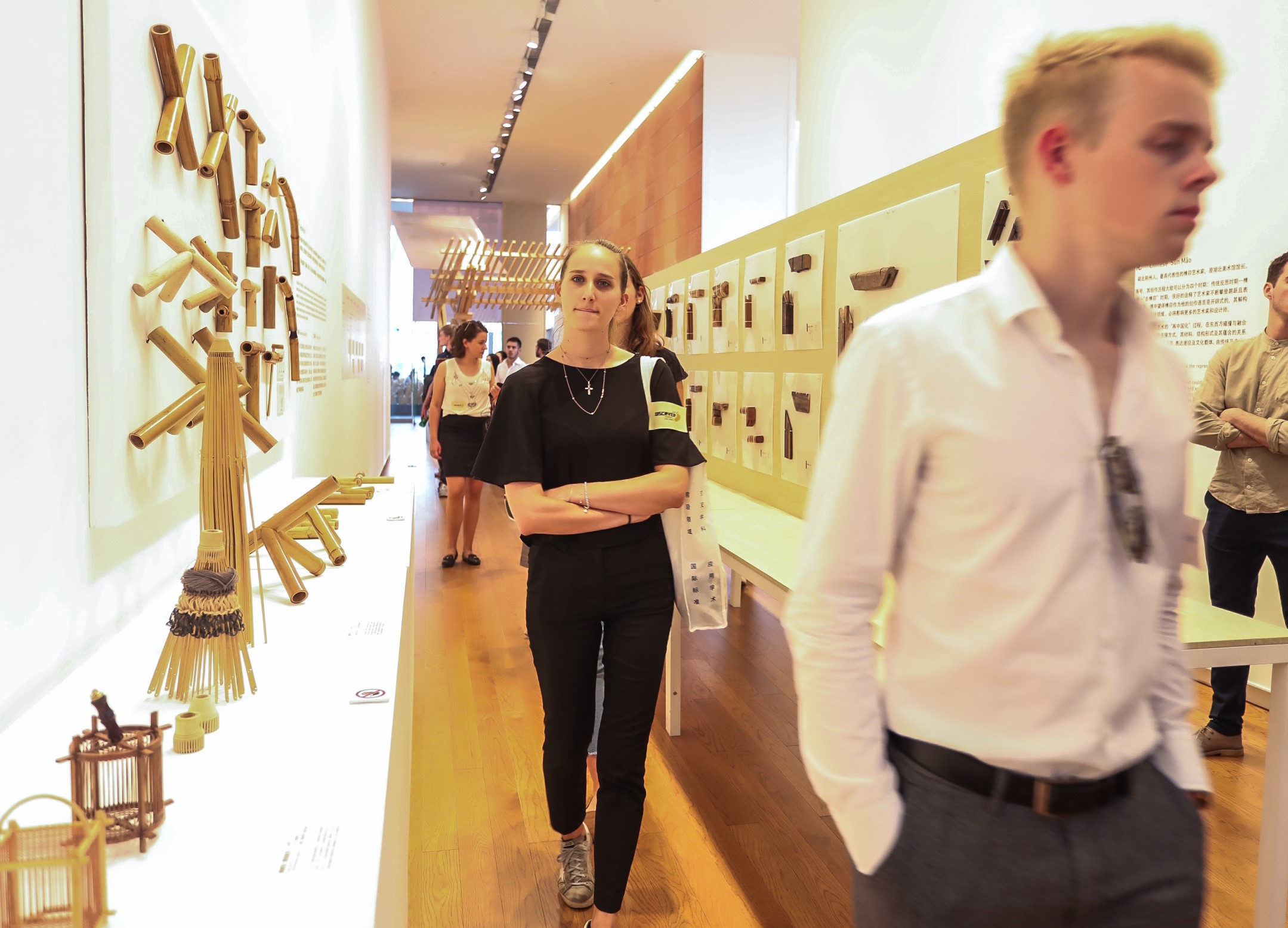
Our bus then meandered down some local neighborhood streets and dropped us off in front of the Shekou Sub-district Service Center and Shekou Management and Service Center for Expats (MSCE). We toured the first floor of the building, which has some resources available to the community, like laptops, an event room, a theatre, and English language learning aids. On the second floor, the Shekou MSCE provides important expat services like residence registration, law and visa consultation, legal advice, and even social activities like cultural events and language exchanges. This seems like a useful resource for expats because navigating China with limited language skills can be difficult without help. In his warm welcome speech, Deputy director of Shekou Sub-district Office, Mr. Huang Hongfu said, “I hope you can stay and work in Shenzhen after graduation.” The services provided at the center certainly will help people live and establish careers in Shenzhen. Mr. Huang and other staff members then gifted our group members with a nice tea set and joined us for snacks and espresso.
Our last visit was to the southern end of the Dasha River Ecological Corridor, the same river that flows through University Town. As I walked along the river, enjoying the light breeze and dimming evening light, I felt excited about the development happening along the river, which includes our campus. It was promising to see just how nice the landscape has been improved in this area. Can’t wait for our campus to similarly complete it’s improvements along the river. We even got to see rowers along the river and visited the Hegret Rowing Club building.
We would like to thank the Nanshan District Foreign Affairs Office and Southwind Social Work Service Center once again for helping us ‘Discover Nanshan’.
Comments from Participants
“I liked the part where we could interact with well-known companies, getting to know their product lines and collaborations. Also, it was nice to be welcomed by the Shekou service center.”
- Li Hao Ying, Norway, PHBS exchange student
“I thought it was great initiative to get a close contact with the vibrant and dynamic technological sector of Shenzhen. I would also say that the best way to be fully integrated in a new culture is by exploring the city and establishing a network with local people which was exactly what the trip allowed us to do.”
– Diogo Gouveia, Portugal, 1st Year Economics
“I felt like I learned a lot about the Nanshan District. Although I have been to the Shekou area a few times, I had no idea about the community center for expats or had ever entered a high rise office building dedicated to technology and innovation. I enjoyed the new experience.”
– Ann Tseng, USA, 2nd Year Finance
Written by Jackson Boyd